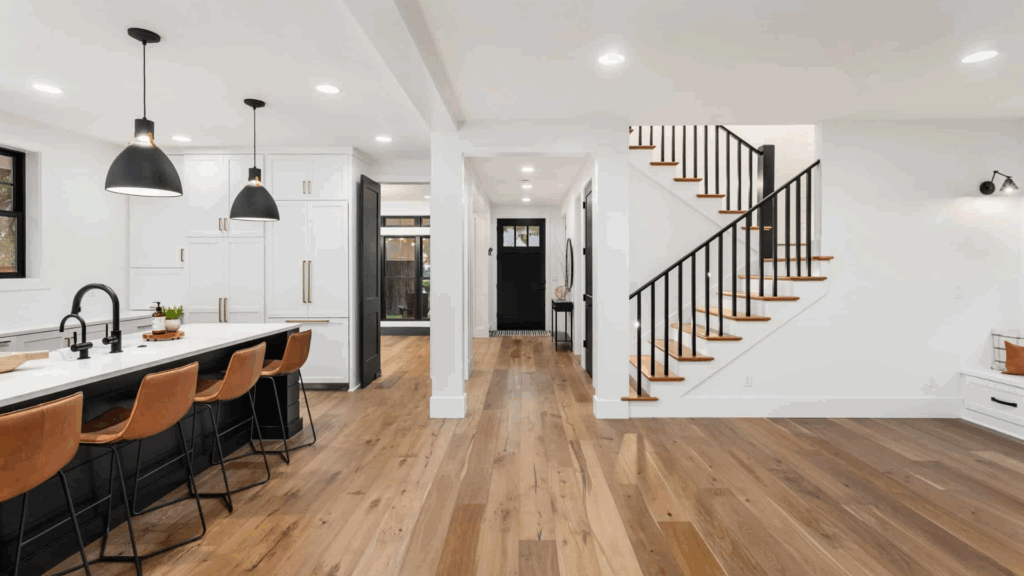I love how wood floors add warmth and a natural touch to any room. However, choosing the right wall color to complement them can be tricky.
After going through expert advice, designer recommendations, and real-life examples, I’ve learned the key to making both elements work together.
From light oak to deep walnut, each wood type requires a different approach when selecting wall colors.
In this blog, I’ll guide you through simple ways to match wall colors with wood floors using tips that anyone can apply.
I’ll cover:
- Wall colors for light wood floors
- Best shades for medium wood floors
- Complementary wall colors for dark wood floors
- Expert tips for balancing floors and walls in any space
The Importance of Matching Undertones in Wood Floors
Undertones are the subtle colors beneath the surface tone of your wood floor, and they play a big role in how well your wall color matches.
Wood floors can have warm undertones like red, orange, or yellow, or cool undertones like gray or taupe.
If you pair warm wood with cool paint- or the other way around- the space can feel off or disconnected.
Matching undertones helps the room feel balanced and visually pleasing. For example, warm oak floors look great with soft beige or creamy walls, while cool ash or gray wood pairs better with icy blues or light grays.
If you’re not sure what undertone your floor has, hold up a white sheet of paper next to it and see what colors stand out. Once you know the undertone, you’ll find it much easier to choose the right wall color.
Tips and Ideas for Matching Wall Colors with Wood Floors
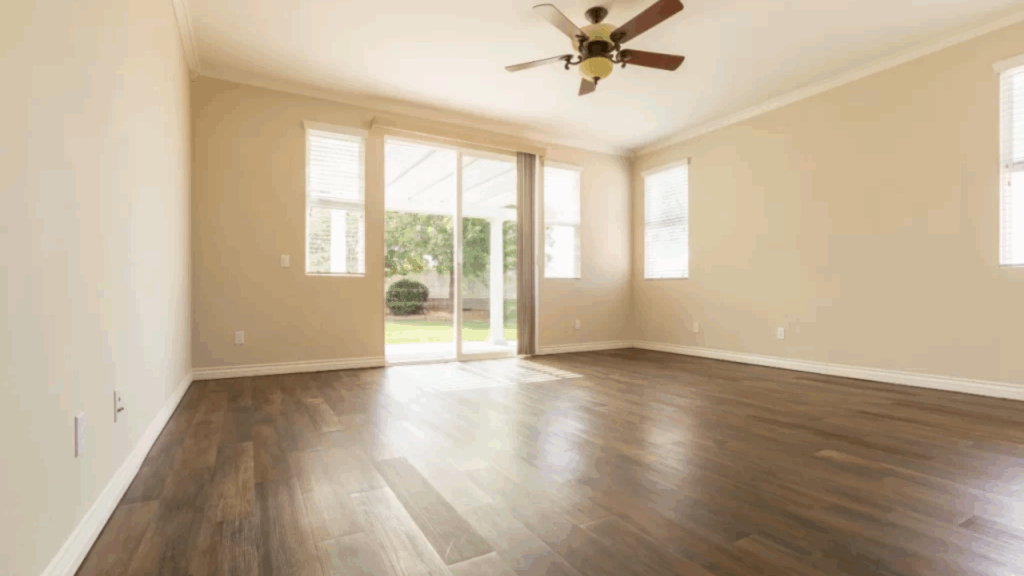
Use these simple tips to help you choose wall colors that complement your wood floors and create a balanced, stylish look in any room.
1. Pick a Color That Matches the Floor’s Undertone
Check if your wood floor has a warm or cool undertone. Warm-toned floors pair well with beige, cream, or warm green walls. Cool-toned floors work best with grays, light blues, or soft greens.
Matching undertones keeps the room looking balanced and natural without creating visual tension between the floor and wall.
2. Use Contrast for Visual Interest
Light wood floors pop when paired with bold wall colors like navy, charcoal, or forest green. Dark floors, on the other hand, feel more open with light walls such as soft white or pale gray.
Using contrast can create depth and dimension in a room without making it feel too busy.
3. Stick to Neutral Wall Colors for Flexibility
Neutral wall colors like greige, soft taupe, or off-white are great for almost any wood floor. They allow your floors to shine while giving you freedom to decorate with bolder furniture, rugs, or art.
This approach works well in open floor plans or homes with mixed wood tones.
4. Always Test Paint Samples in Your Space
Colors look different depending on lighting and surroundings. Before committing, test several wall color samples directly on your wall next to your floor.
Observe them throughout the day under natural and artificial light. This simple step can prevent costly repainting later and help you feel more confident in your final choice.
Color Ideas That Complement Wood Floors
These wall color ideas are designed to enhance the natural beauty of your wood floors while creating a balanced and inviting space.
1. Soft White
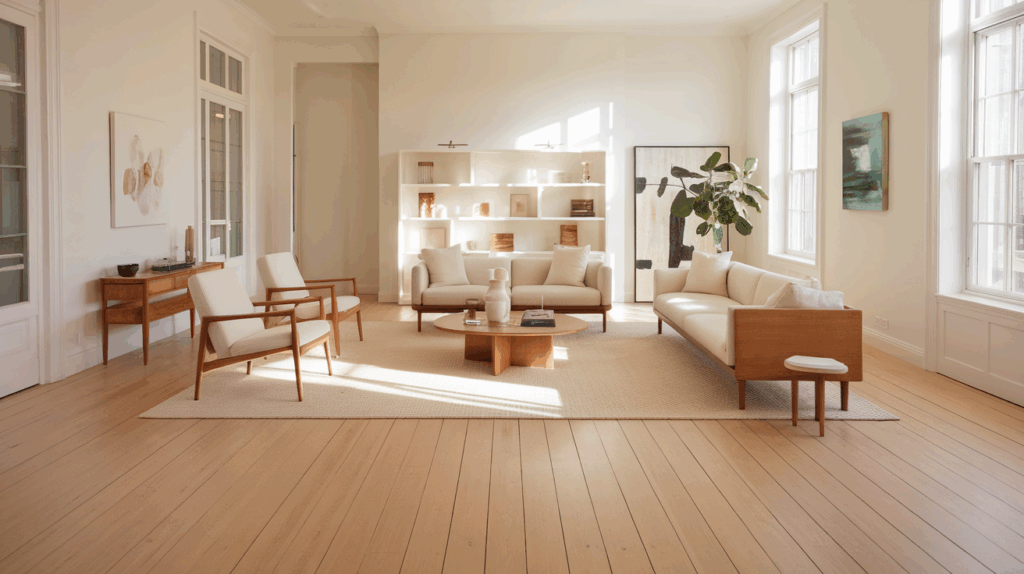
Soft white is a versatile wall color that works with nearly any wood floor. It keeps the space feeling bright and open while letting the wood’s natural color take center stage.
This pairing is ideal if you want a clean, simple look that doesn’t compete with your flooring or overwhelm the room’s design.
2. Sage Green
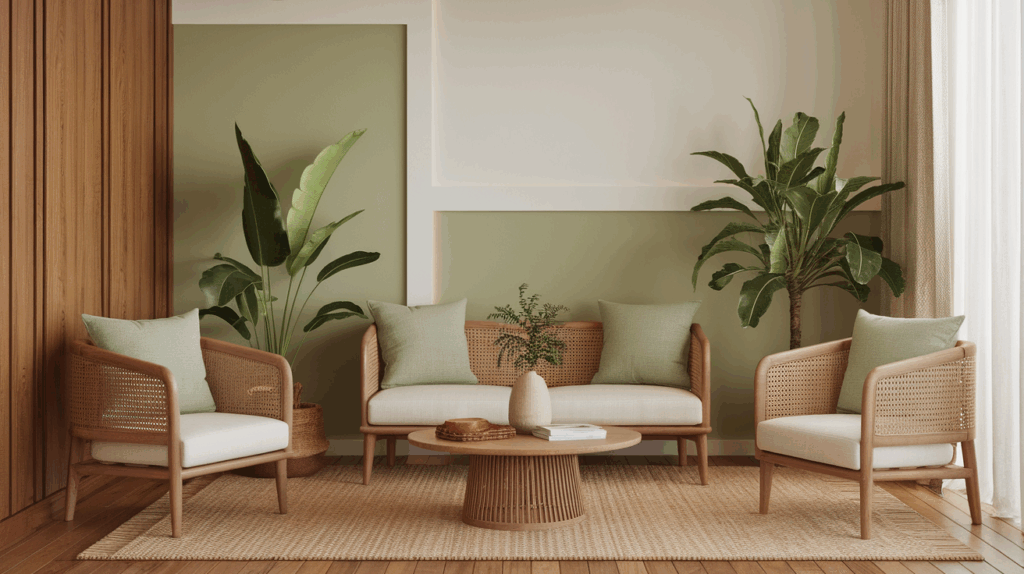
Sage green adds a peaceful, earthy feel that pairs especially well with medium-toned or warm wood floors.
It enhances the natural beauty of wood without drawing too much attention to the walls. If you want a soft, cozy look with a touch of color, sage green is a stylish and balanced choice.
3. Warm Beige
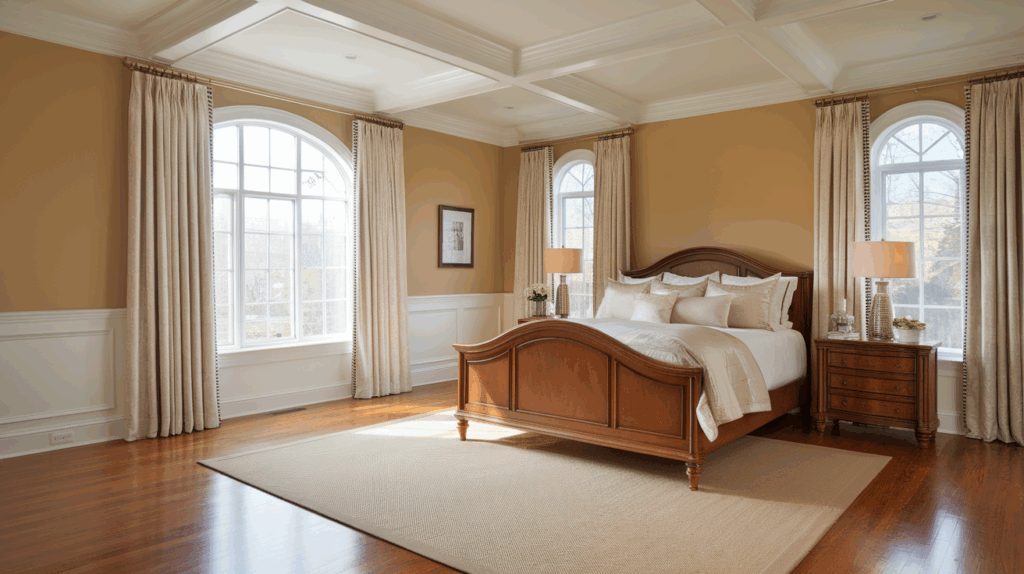
Warm beige complements floors with red, orange, or golden tones like cherry, maple, or oak. It creates a smooth, coordinated look that feels welcoming and timeless.
This neutral color makes your space feel warmer without being too dark, and it works well in living rooms, bedrooms, or any space where comfort matters.
4. Cool Gray
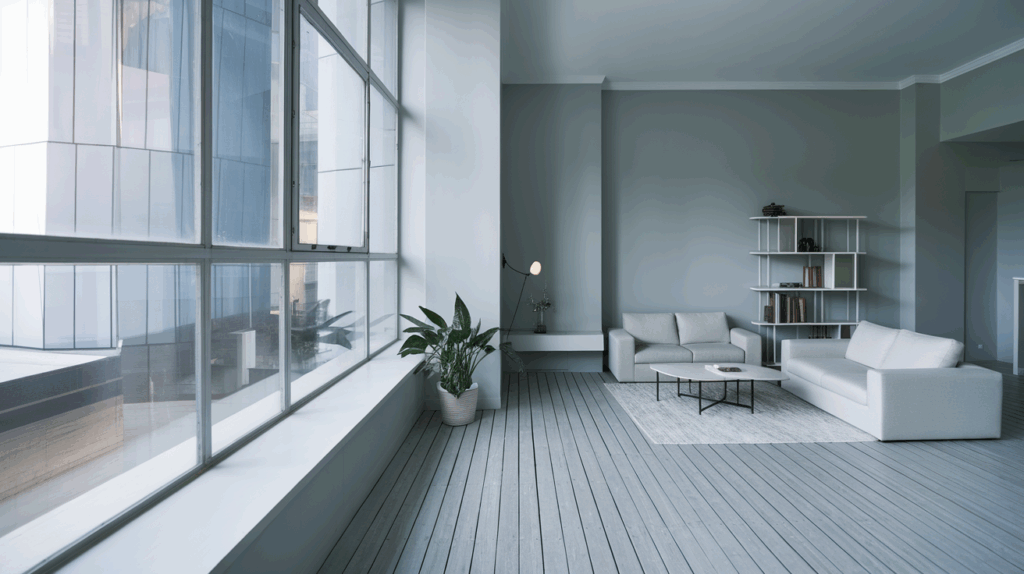
Cool gray walls work best with ash, gray-washed, or other cool-toned wood floors. The combination feels fresh and modern without being stark.
If you’re going for a clean, urban style, this pairing gives you a sleek backdrop that makes furniture and accents stand out while still letting the flooring shine.
Light vs. Dark Wood: How to Choose Wall Colors
| Wood Floor Shade | Best Wall Colors | Effect on Room Feel | Key Tip |
|---|---|---|---|
| Light Wood (e.g., Maple, White Oak) | Cool Grays, Warm Beiges, Deep Blues | Makes rooms feel larger and more open, with flexibility in color choices | Pair with both soft neutrals and bold contrasting colors for added dimension |
| Dark Wood (e.g., Walnut, Espresso) | Soft White, Warm Cream, Pale Taupe | Prevents the room from feeling too heavy while highlighting the richness of the flooring | Use lighter wall shades to create contrast and keep the room bright |
How Lighting Affects Paint and Floor Pairings
Light changes how wall and floor colors appear, so it’s important to test paint in real lighting conditions before choosing.
- Natural Light Brings Out True Tones: Sunlight highlights the real undertones of both paint and wood, making it easier to see if they work well together.
- Artificial Light Can Shift Color Temperature: Warm bulbs may make cool colors look dull, while cool bulbs can make warm tones appear harsh or too yellow.
- North-Facing Rooms Feel Cooler: These rooms get less sunlight, so warm paint colors help balance cool-toned wood and brighten the space.
- South-Facing Rooms Enhance Warmth: Bright natural light makes both wall and wood tones appear richer, so you can use cooler wall colors for contrast without losing warmth.
Expert Tips and Advice
These expert-backed tips can help you confidently pair wall colors with your wood floors for a cohesive, stylish look.
- Start with the Floor’s Undertone: Designers always check if the wood has warm or cool undertones before selecting any paint colors.
- Use Contrast Thoughtfully: Experts suggest using contrasting shades for depth, but caution against pairing dark walls with dark floors in small spaces.
- Keep the Trim and Ceiling Colors Neutral: Professional decorators often recommend crisp white or soft neutrals for trim and ceilings to maintain visual balance.
- Test in Different Lighting: Paint specialists advise testing color swatches in morning, afternoon, and evening light to see true tone shifts.
- Stick to a Whole-Home Color Scheme: Interior designers recommend using a consistent palette throughout the home to create a smooth, connected feel across rooms.
Common Wall Color Mistakes to Avoid
Avoid these common mistakes to make sure your wall color enhances, not clashes with, your wood floors.
- Ignoring Wood Undertones: Choosing a paint color without considering your floor’s warm or cool undertone can make the space feel mismatched.
- Going Too Dark with Dark Floors: Pairing dark walls with dark wood can make a room feel small and heavy unless balanced with light furniture or trim.
- Using Too Many Bold Colors Together: Combining bold wall paint with strong wood tones may overwhelm the space and create visual chaos.
- Skipping Paint Sample Tests: Not testing wall color samples in your actual lighting and next to your floor can lead to surprises after painting.
Conclusion
Matching wall colors with wood floors doesn’t have to feel overwhelming.
I’ve found that starting with the floor’s undertone and then picking colors that either complement or contrast in a balanced way makes a big difference.
Light wood gives you flexibility with bold or neutral walls, while dark wood often shines with soft, lighter tones.
Testing samples, paying attention to lighting, and thinking about room function all help create a space that feels pulled together.
Ready to get started? Grab a few paint samples and try them next to your floor in different lighting. If you’d like help narrowing it down, feel free to ask; I’d be glad to help you choose the perfect match.
Frequently Asked Questions
Can I Mix Different Wood Floor Tones in One Home?
Yes, mixing wood tones is possible as long as there’s a clear contrast or a shared undertone. Keep wall colors neutral or cohesive to tie everything together visually.
What Wall Colors Work Best with Patterned Wood Floors?
Patterned floors, like herringbone or parquet, already draw attention. Stick to simple wall colors like soft white, pale gray, or warm beige to let the pattern be the focal point.
Should Wall Art Influence My Paint Color Choice?
Absolutely. If you have bold or colorful artwork, it’s best to choose a wall color that doesn’t compete. Neutral backgrounds help art stand out while keeping the room balanced.
Is It Okay to Use Wallpaper Instead of Paint?
Yes, wallpaper can work well with wood floors. Just choose patterns that reflect your wood’s tone and avoid overly busy designs if the flooring already has strong grain or color contrast.

